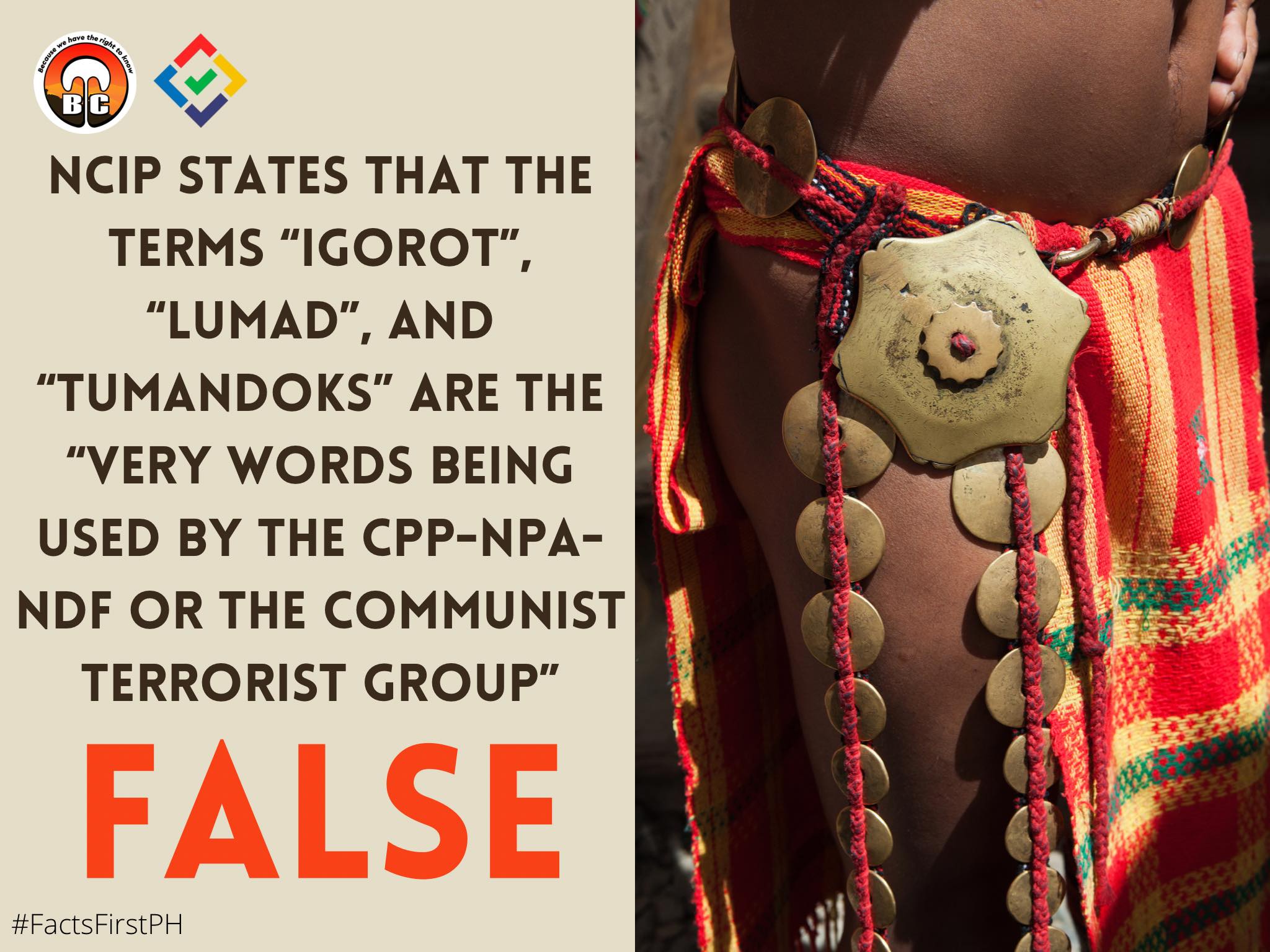Claim: NCIP states that the terms “Igorot”, “Lumad”, and “Tumandoks” are the “very words being used by the CPP-NPA-NDF or the communist terrorist group”
Rating: FALSE
The Facts: The video, posted on May 6, 2021, by Facebook user Manja Bayang, shows National Commission on Indigenous Peoples Commissioner Gaspar Cayat speaking at a Project Epanaw activity in SM City Baguio.
The video shows Cayat saying that the CPP-NPA-NDF or the communist terrorist groups use the terms “Igorot”, “Lumad”, and “Tumandok”.
These are terms that refer to indigenous groups in the Philippines.
The term “Igorot” is a general term used to refer to people from the Cordilleras. It includes the ethnolinguistic groups Isneg (Apayao), Kalinga, Bontoc, Ifugao, Kankanaey, and Ibaloi. These groups have one thing in common which is that historically, they have resisted assimilation into the Spanish Empire. (W.H. Scott, Discovery of the Igorots, 1974)
“Lumad” is a Bisayan word that means “native” or “indigenous”. “It is adopted by a group of 15 from more than 18 Mindanao ethnic groups in their Cotabato Congress in June 1986 to distinguish them from the other Mindanaons, Moro or Christian. Its usage was accepted during the Cory Administration when R.A. 6734, the word Lumad was used in Art. XIII Sec. 8(2) to distinguish these ethnic communities from the Bangsa Moro.”
“Tumandok” is used to refer to a group of indigenous people native to the Visayas in the Capiz-Lambunao area of Panay. While usually thought of as a single group, they can be divided into smaller groups based on their location. Pan-ayanon and Jalawudnon refer to those who live by Panay and the Jalaur Rivers. The Aklanon are those who reside near the Aklan River.
The terms “Igorot”, “Lumad”, and “Tumandok” are used by the general public, are found in academic works, in literature, and more.
These terms are not exclusively used by the CPP-NPA-NDF or communist terrorist groups.
Why We Fact-Checked This: The claim can be misconstrued as red-tagging. Red-tagging puts the lives of innocent people in danger. It makes people vulnerable to attacks, death threats, violence, and death.
Even if the video came out in 2021, the effects can be long-term for these indigenous groups, particularly in light of the Anti-Terrorism Act.
Unfortunately, the government commission that is supposed to advocate for the IPs is the same group that puts these IPs in possible danger.










